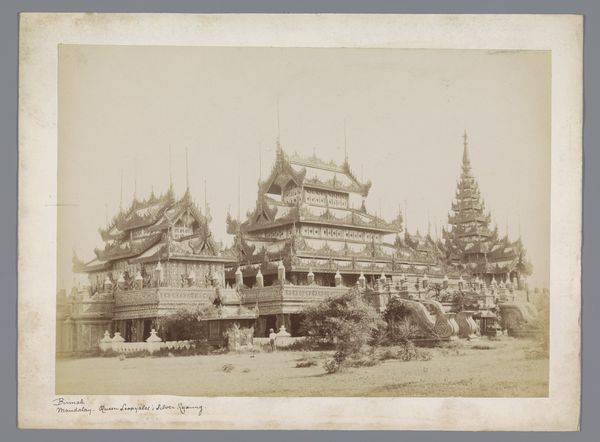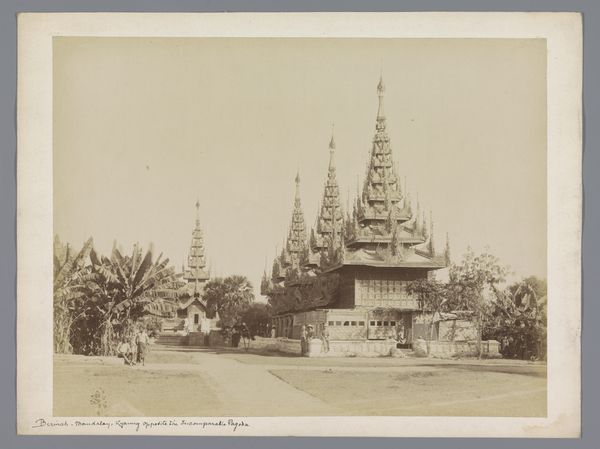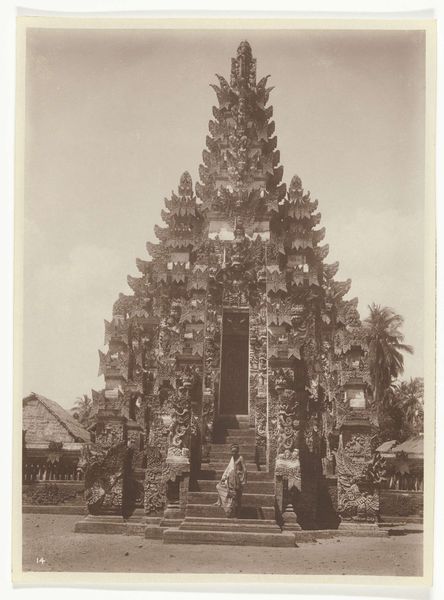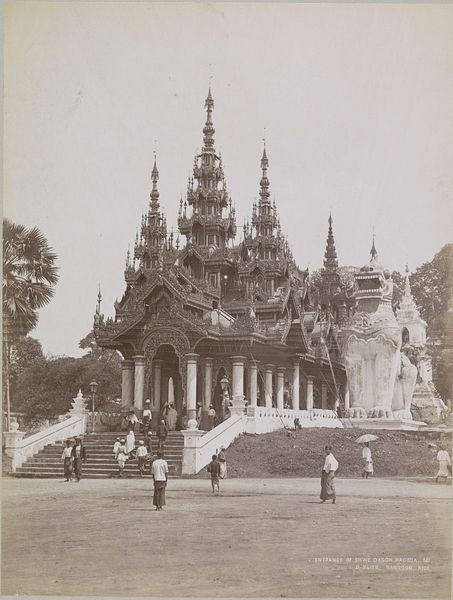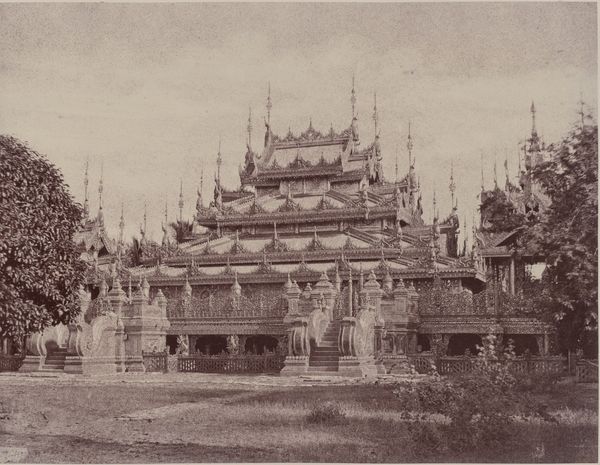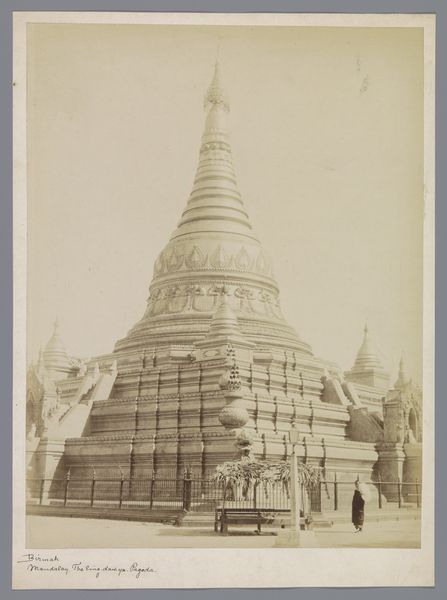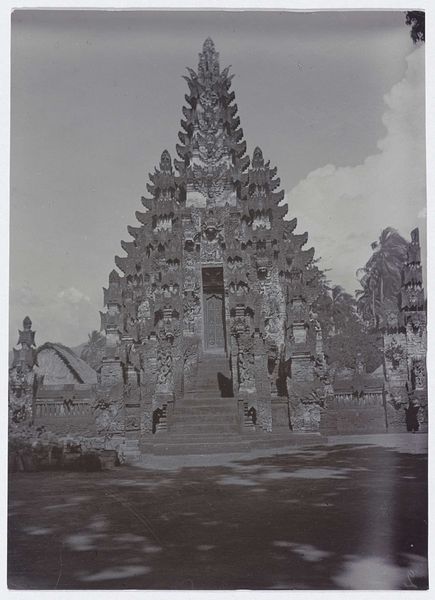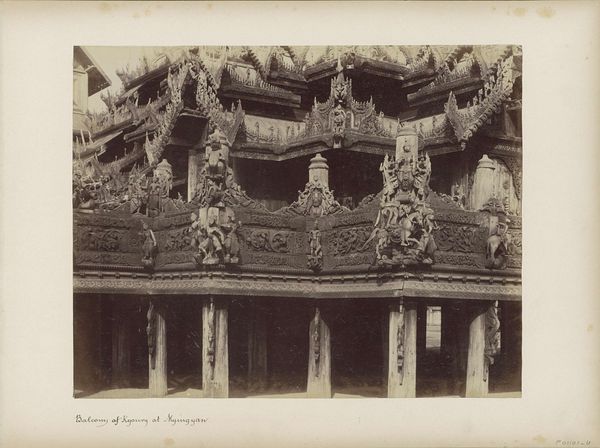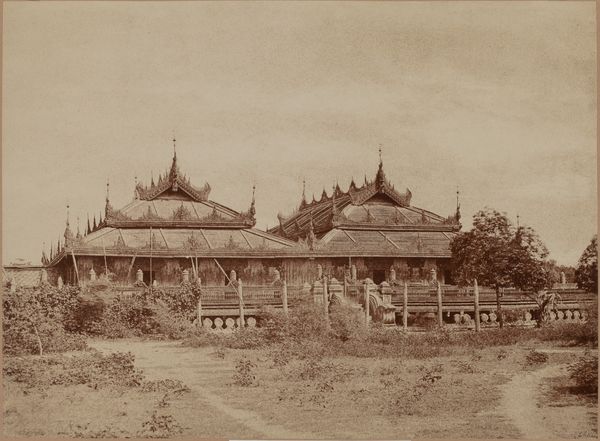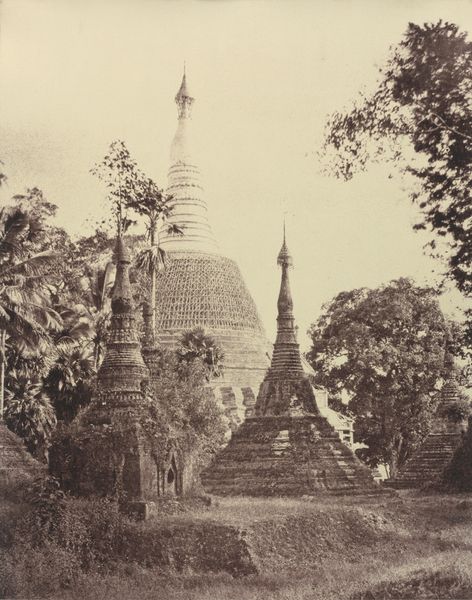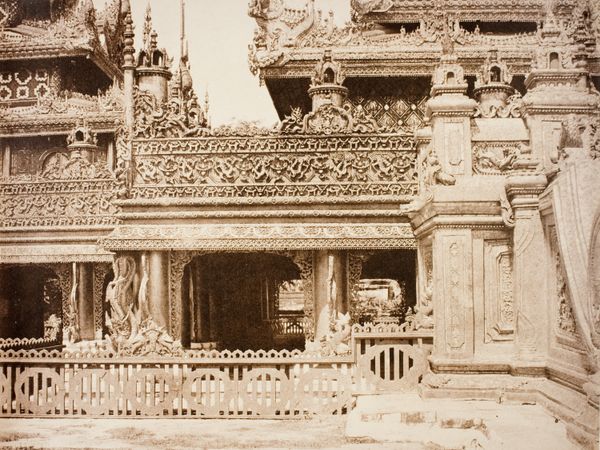
#
pencil drawn
#
photo of handprinted image
#
aged paper
#
toned paper
#
light pencil work
#
ink paper printed
#
pencil sketch
#
old engraving style
#
watercolour illustration
#
watercolor
Dimensions: height 263 mm, width 208 mm
Copyright: Rijks Museum: Open Domain
Editor: So, this is P. Klier’s "Tempel bij de Schwedagonpagode," from around 1885 or 1886. It looks like a print, maybe watercolor or something similar, and the image seems quite delicate. All of this architectural detail! How would you begin to interpret a piece like this? Curator: The aged quality of the print draws me in. Given its creation date, what materials would have been available to Klier? Thinking about the paper itself – its likely origin, the methods used to tone it – provides insight. Consider too the printing process, likely a form of early photomechanical reproduction given the apparent precision. How did that affect access to images of this site? Editor: I hadn't really considered that aspect. Was photography democratizing image production, or did access still depend on specific workshops and techniques? Curator: Exactly. Now consider what it meant to produce a photomechanical image of the Schwedagon Pagoda and distribute it to a European audience, which appears likely based on the image's caption, and also considering P. Klier was working in Indonesia, Dutch East Indies at that time. What power dynamics were at play? How does this object participate in broader colonial projects of representation and control? What did owning and possessing such an image represent for Europeans back home? Editor: So, by looking at the materials and how they were used, we can actually unpack some of the social context of the image itself and even the artist's role. I see it now; it is not only the final product but everything that goes into the process. Curator: Precisely. From the source of the paper to the dissemination of the final print, each step involved choices and labor that tell a story about production and consumption at that time. Now you're thinking like a true materialist art historian.
Comments
No comments
Be the first to comment and join the conversation on the ultimate creative platform.
